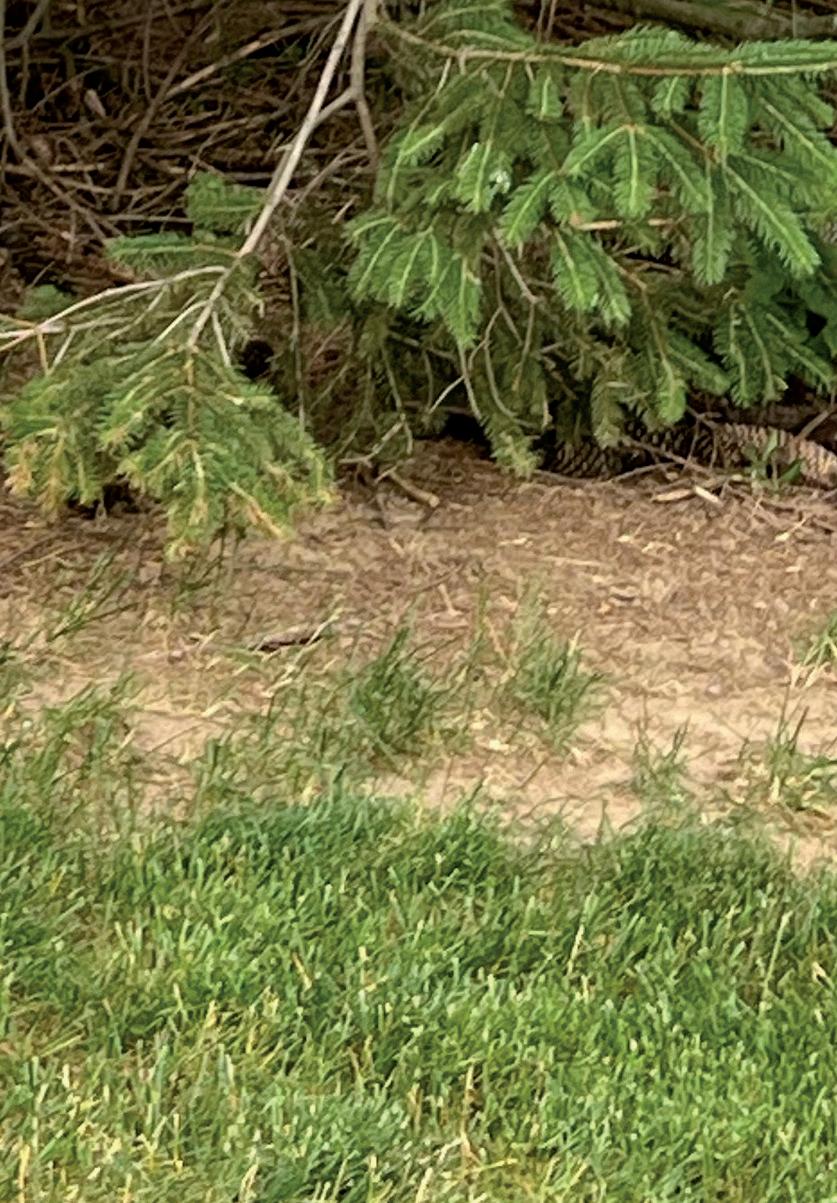
4 minute read
blackouts
Thankfully, the outlook for Ohio is a little less urgent, says Asim Haque, vice president for state policy and member services for PJM Interconnection, which is responsible for the part of the electric grid that includes Ohio. Because the region still has higher baseload capacity from coal and natural gas plants, the worstcase scenarios of demand outstripping supply are less likely here, at least for now.
“If you look at the NERC summer assessment, we’re not one of the more volatile areas that the report identifies,” Haque says. “But the states that border us are. We’re very concerned about whether we’ll continue to have adequate resources later in this decade.”
A perfect storm
A strain on the supply of available electricity can come from inadequate power generation or from problems with transmission, says Tom Schmidt, principal planning engineer for Buckeye Power.
It was a culmination of transmission problems, in fact, that led to the events last June. “Some planned outages weren’t wrapped up in May, as they were supposed to have been,” Schmidt says. “Power lines were under construction or being upgraded, so that was the first line of defense down. The second was
Rolling blackout:
Sometimes called a “forced outage” or an “intermittent power interruption,” a “rolling blackout” is a systematic outage implemented by electric utilities to reduce total electricity usage at times of exceptionally high demand when the supply of available electricity falls short, or the means to transmit it to areas where it’s needed are compromised. Generally, power to an area is shut off for a specified time, then restored as another area is shut off, to limit the outage duration for each area.
the storms that rolled through, taking additional lines down, and then extreme heat came in on top of that.”
Any one of those problems wouldn’t be nearly enough to necessitate rolling blackouts, Wilson says. “A 100year heat, a storm, or an outage issue alone wouldn’t do it,” he says. “It just all happened at the same time.”

In December 2022, the shortfall came in generation and affected a much wider area, Wilson says. The winter storm brought sudden extreme cold, and some natural gas plants experienced problems and didn’t come online quickly enough to meet the jump in demand.
“There was not enough power generated for the power consumed,” he says. “It was a different path to the same conclusion. Users were asked to curtail load across multiple states.”



In Kentucky, five electric co-ops were among the utilities asked to reduce energy use, says Joe Arnold, vice president for strategic communications for Kentucky Electric Cooperatives. “Utilities asked account holders to cut back on unnecessary power use, and some had to take the extraordinary step of creating short, temporary power outages,” he says. “The co-ops did everything they could to protect the grid and minimize disruption to their members.
Continued on page 6
Brownout: A lowering of voltage in the electric system is called a “brownout” because incandescent lightbulbs will dim with less voltage. Grid operators may purposely lower voltage to slightly reduce system loading (called “voltage regulation”) but are required to maintain an acceptable level because voltage that’s too low can damage equipment. At times, consumers may observe low voltage during periods of especially high demand, but those brownouts are not intentional, perhaps the result of equipment failure or insufficient voltage regulation.
Utilizing social media and news media, the affected co-ops kept members updated as much as possible during the event.”
Ohio’s co-ops are likewise prepared, and should the need for conservation or forced outages arise, they would communicate closely with their members, Wilson says.
Rising risks
The growing possibility of such shortfalls in generation is causing concern about electric reliability going forward, Haque says.
“We’re going to see demand increase on the system due to data centers and continued electrification, both in the auto industry and in homes,” he says. “Supply is dwindling, primarily because of state and federal policies that are prematurely pushing resources out of the generation mix.
“We are not seeing replacement generation come on at a rate to match the supply that is being forced out,” he says. “Thermal resources — coal, natural gas, and nuclear power — provide essential reliability services. If we’re pushing them off the system, we’ll have grid reliability issues. We need those thermal sources until replacement technology can be deployed at scale, whether that’s long-duration batteries for wind and solar, or small modular nuclear reactors.”
Simultaneous growth of demand and reduced supply means less redundancy, and a higher probability that demand will outstrip supply.
“We’re seeing loads increasing, but also generation going away more quickly than it can be replaced,” Wilson says. “We’re getting closer than we’d like to be with the amount of generation compared to the amount of load we might see during extreme weather.”
The primary driver, Haque says, is the rapid progression of environmental policy — from the Obama administration’s Clean Power Plan, which promoted use of natural gas to replace coal, to current policies aiming to eliminate all thermal sources.
“This is being done devoid of the reliability impact,” Haque says. “We need to slow down on retirements across the country, so we can continue to bring renewable resources online.”
The forecast going forward is even worse, as proposed new rules by the Environmental Protection Agency could force nearly all fossil fuel plants to shut down in the next decade.
“The rolling blackouts and calls for emergency curtailments in December should serve as a wake-up call to politicians and regulators who apparently take electric service for granted,” says Kentucky’s Arnold. “When policies discourage the most reliable energy sources, local electric consumers are the ones who pay the price.”
Reducing total demand for electricity can relieve stress on the grid and reduce the likelihood of rolling blackouts. Cooperative members can help by:
• Conserving electricity, particularly during peak times of the day (generally in the morning, as people are getting ready for work and school, and in the evening, from about 6 p.m. to 10 p.m.). This can include doing high-energy tasks, like charging electric vehicles and doing laundry, during off-peak times.
• Being aware of weather events that will stress the grid. Adjusting thermostats a bit higher in the summer and lower in the winter and making extra conservation efforts during extreme weather can make a difference.
• Participating in their utility’s load management system, which can save money and help cooperatives manage electricity use during the very highest usage peaks. Load management devices on electric water heaters and HVAC systems allow the co-op to turn power to the appliance off and on during the peak alert period. This means that, for instance, everyone’s air conditioners (which cycle on and off to maintain thermostat temperatures anyway) aren’t cycled on at the same time, evening out the highest demand peaks and relieving some of the pressure on the grid.





























